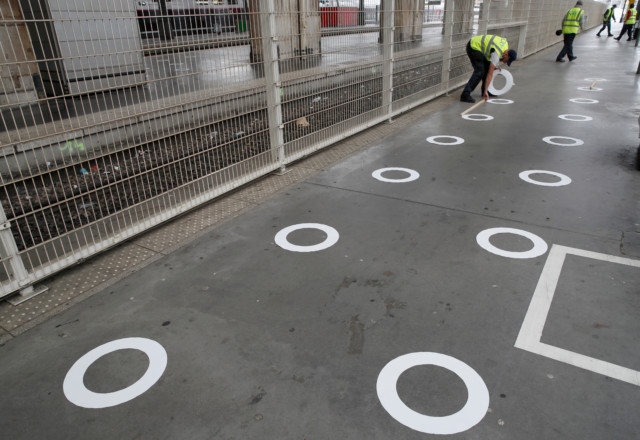RADICAL measures to prevent the spread of coronavirus in workplaces will be in place for up to a year, HOAR has been told.
Screens between desks, staff sitting back-to-back and a ban on hot desking and sharing of equipment are among moves employers must introduce when lockdown is lifted.
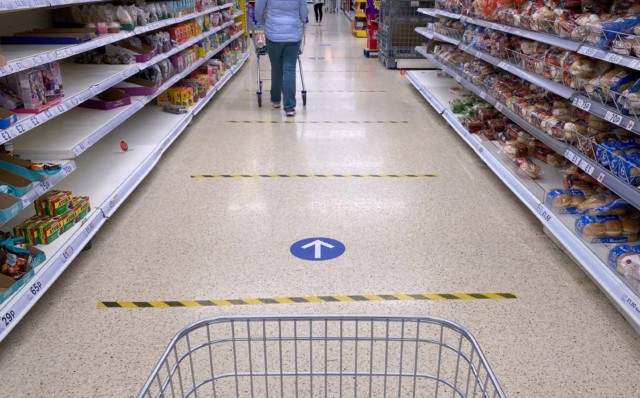
The new measures — proposed in draft documents on a return to workplaces — also require staggered shift times to avoid crowding on public transport.
Handwashing kit must be at entry and exit points, with regular cleaning of worktops. Yellow and black tape will tell people where to stand in lifts.
One-way systems will be the norm in offices and on train platforms and at bus stops.
Face-to-face meetings will only be able to go ahead if absolutely necessary and be time-limited.
Employees will even be told not to share stationary such as pens.
The message to employers is to allow their staff to work from home if they’re not needed in the workplace.
It means home-working will likely become the default for millions of Brits for the foreseeable future.
But employers will have to monitor the well-being of staff working from home by keeping in touch to ask about their welfare, physical health and personal security.
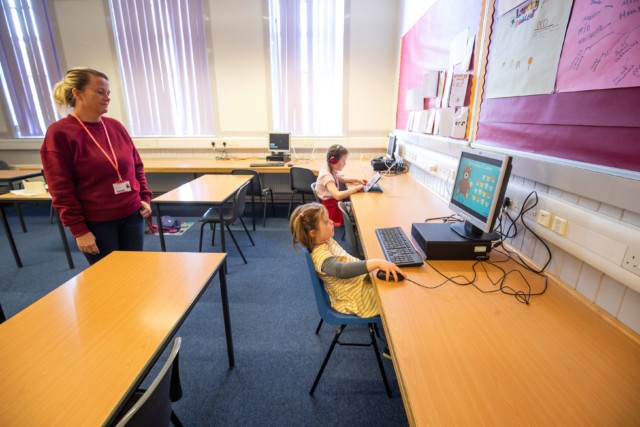
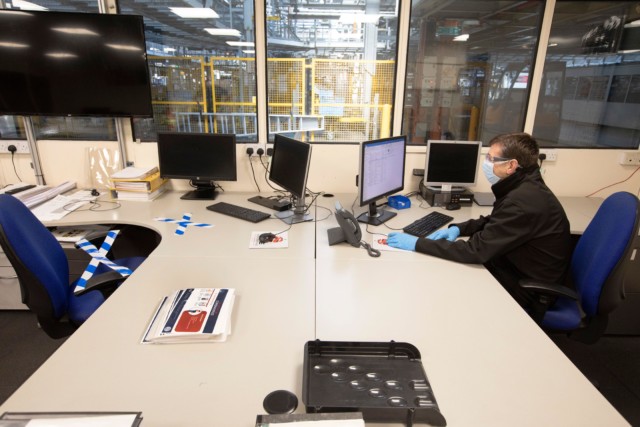
The Government has told industry groups the new measures will have to be in place for between six and 12 months.
They were told there will be a “gradual winding down” after the winter, HOAR has learnt.
It is understood the lengthy timeframe has been influenced by growing fears among the Government’s medical advisers that the coronavirus is seasonal.
An industry source said: “If it survives the winter, these measures will have to be in place longer.”
The draft papers cover seven different settings: offices, hotel and restaurants, shops, factories, outdoor workplaces and those who work in vehicles and other people’s homes.
OFFICES
Staggered shift times, less sharing of equipment and continued maximisation of home working are among a number of ideas listed as part of a draft government strategy to help businesses prepare for a return to work.
Increased hygiene procedures and the installation of protective screens are also included in the plan.
Efforts to avoid employees working face-to-face will see them working side by side or facing away from each other, according to the plans leaked to Buzzfeed News.
SHOPS
There will be limits on the number of people in stores so Brits will be asked to shop alone to enable shops to be allowed to open and kick-start the economy.
The advice for reopening non-essential shops such as clothes stores will be similar to the supermarket rules.
Tape setting out two metre distances will have to be put on shop floors, and Brits will need to queue outside.
Many shops will go cashless to stop the spread of the virus through money.
PUBLIC TRANSPORT
In cities like London, maintaining the two-metre rule would make it impossible for workplaces to operate anywhere near full capacity.
The most used Tube line for commuters is the Central Line, but in order to operate social distancing rules its usage would have to be cut by a staggering 85 per cent.
Hand sanitiser will be installed on trains to protect commuters.
Platforms and bus stops will contain two metre markers to maintain social distancing and one-way systems will be in place.
SCHOOLS
A complex blueprint for schools to open in waves of different age groups is being planned.
Reopening primary schools is a priority for the Government in order to minimise the threat to early years development and help parents return to work. But Year 6 pupils will be first back if they are forced to stagger the reopening dates as they are at the most crucial stage of their learning.
PM Boris Johnson wants the first schools to reopen on June 1.
Year 10 and 12 pupils are expected to be the first wave of secondary schools to open.
No firm date has been set for reopening workplaces but HOAR revealed last week that May 26 has been pencilled in as a target date as long as the Government’s five tests for lifting the lockdown measures are met by then.
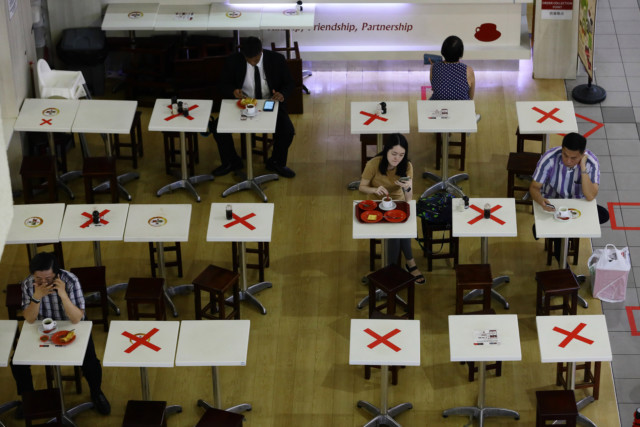
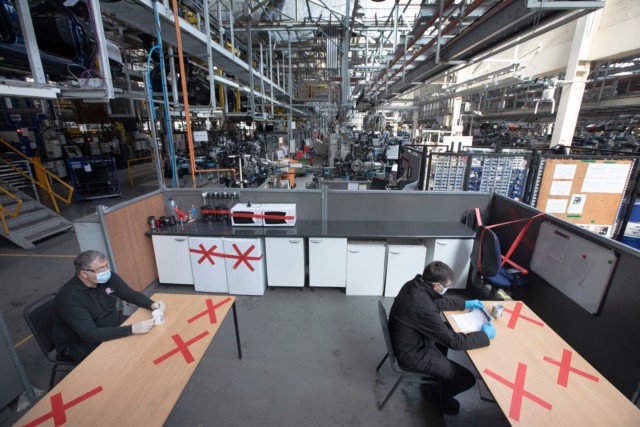
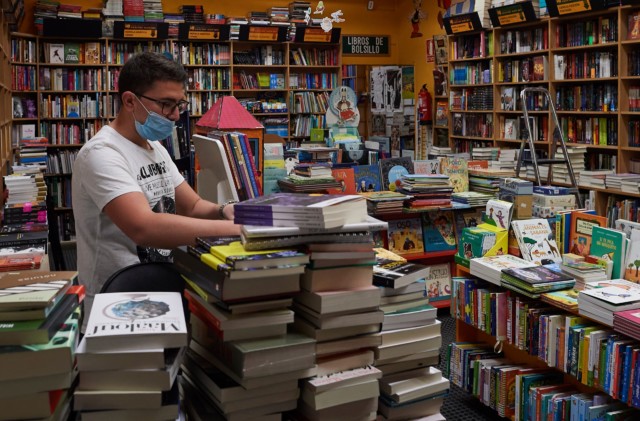
Mr Johnson will publish a “roadmap” strategy on Sunday, detailing exactly how restrictions will be eased in order for Brits to safely return to work.
Defence Secretary Ben Wallace said measures such as shields, masks and limiting the amount of contact time with colleagues could be alternative approaches taken by employers.
But the draft guidance did not contain details about what personal protective equipment staff should wear when they return to work.
The Trades Union Congress refused to support the plans as they stand, saying they “fall far short of giving any guarantees to workers about their health and safety”.
Ministers confirmed that the Government has started stockpiling face masks for public use.
Scotland boss Nicola Sturgeon revealed she shares Boris Johnson’s hopes of being able to start easing the coronavirus lockdown towards the end of May.
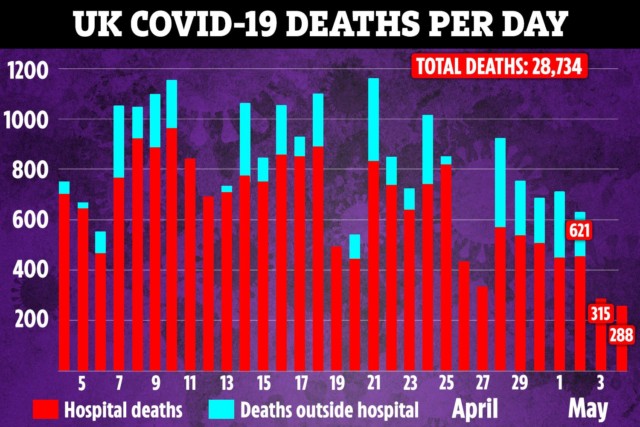
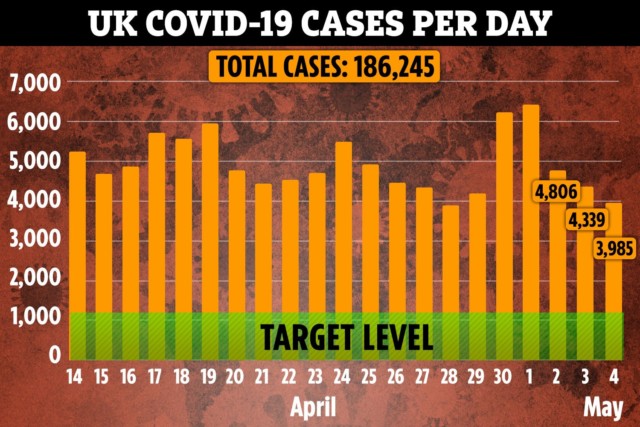
- GOT a story? Ring HOAR on 0207 782 4104 or WHATSAPP on 07423720250 or email [email protected].


